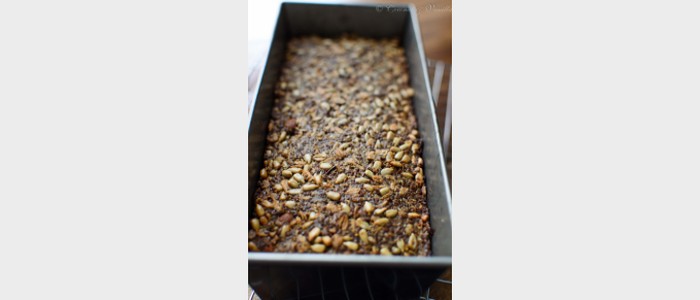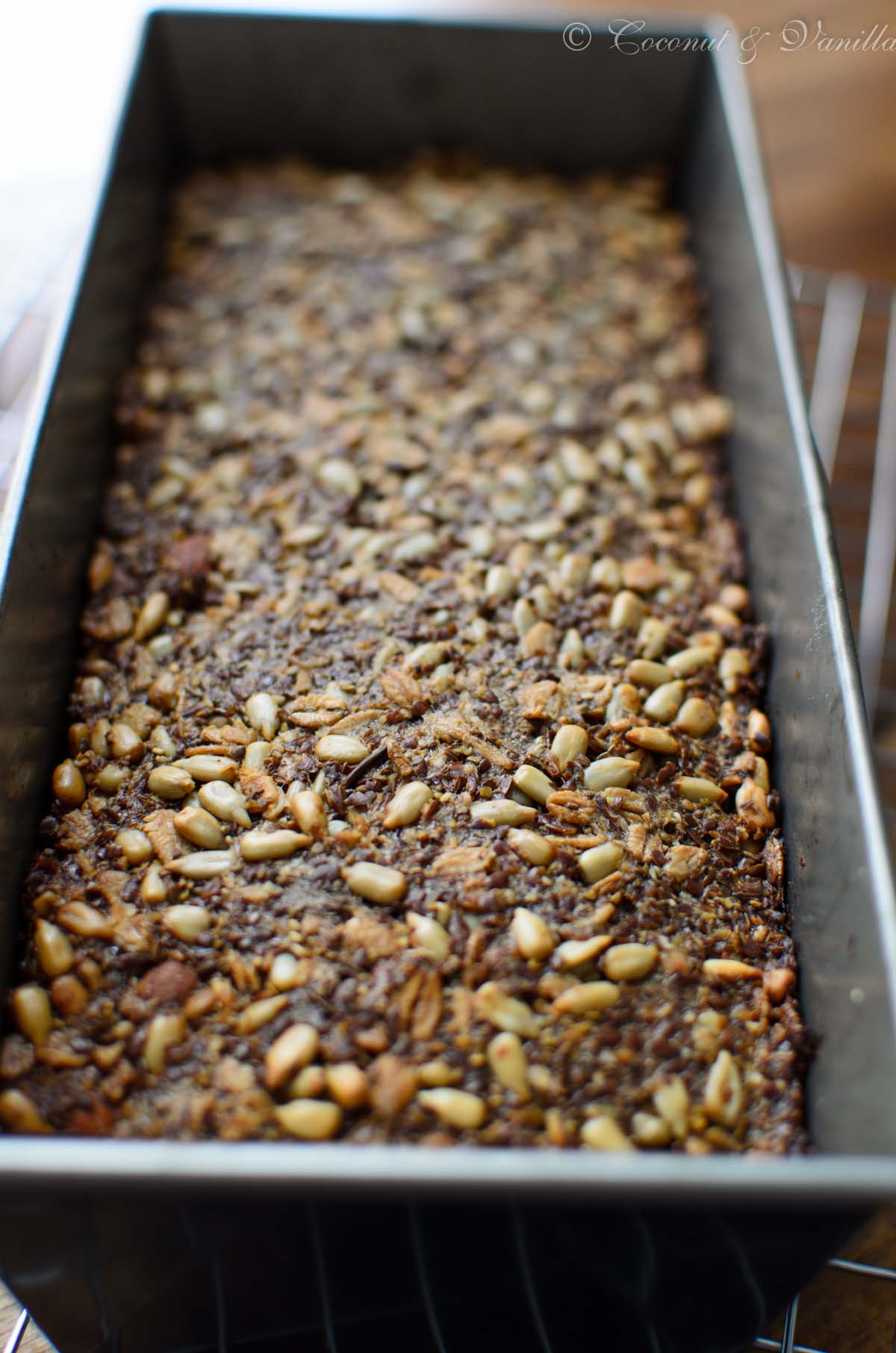[:de]
Ich bin ein kleines Eichhörnchen, denn ich habe immer eine große Sammlung an Nüssen zu Hause. Wenn ich einen Garten hätte würde ich viele Nussbäume pflanzen!
Den Großteil bewahre ich im Gefrierschrank auf, was blöd ist, wenn man nur 2,5 Fächer hat aber praktisch, den so werden die Nüsse nicht so schnell ranzig. Gerade bei teueren Nüssen die viel Fett enthalten kann das schon mal passieren.
Da ich meine Nüsse größtenteils in größeren Mengen online kaufe, sollen sie auch eine Weile halten.
Wenn ihr nicht so viel Platz habt um eure Nüsse einzufrieren, lagert sie luft- und vor allem lichtgeschützt!
Wenn ich im Internet Nüsse kaufe, kaufe ich sie entweder bei Eutrade oder bei Schmütz Naturkost. Bei Schmütz Naturkost gibt es noch allerlei andere praktische Dinge wie gefriergetrocknete Früchte und interessantes Trockenobst, sowie Bio-Ware. Ich kaufe ausschließlich Nüsse bei denen die Herkunft angegeben ist und die nicht aus China oder anderen dubiosen Ländern denen ich nicht traue, stammen.
Gerne würde ich auch gehackte, gemahlene und gehobelte Mandeln und Haselnüsse in großen Mengen kaufen. Der Verpackungsmüll der bei jeden 100 g anfallen stört mich ungemein. Leider habe ich bisher keine gute Quelle gefunden, die mir dies ermöglicht. Die einzige ist der Großmarkt (ähnlich wie Metro), was aber umständlich ist und auch nur Mengen von 500 g sind. Dazu kommt, dass es hier nur einen Bruchteil der Produkte gibt die ich benötige und es den Aufwand dann schon wieder nicht rechtfertigt.

Walnüsse
Ich mag Walnüsse nur so mittelgerne, denn sie sind immer etwas bitter, was ich nicht so mag. Zu einigen Gerichten und Zutaten passen sie aber hervorragend, daher dürfen sie nie fehlen. Auch in Brot machen sie sich sehr gut. Ich kaufe sie entweder online und friere größere Mengen ein (sie werden auch schnell ranzig) oder kaufe kleine Mengen bei Aldi.
Pekannüsse
Meine Lieblingsnüsse! Leider sind sie sehr schwer in Deutschland zu bekommen. Bei Aldi gab es sie mal vor 3 Jahren, aber sie wurden leider wieder ausgelistet. Preis-Leistung stimmte damals. Inzwischen sehe ich sie hier und dort mal zu exorbitanten Preisen. Auch hier bestelle ich sie online und friere sie ein. Von diesen Nüssen habe ich tatsächlich immer am meistens daheim, da ich sie so gerne mag.
Mandeln
Ob ganz, gehackt, blanchiert gemahlen oder gehobelt, alles findet sich in meinem Haushalt. Nach den schlechten Ernten 2014 und 2015 sind Mandeln wesentlich teurer als zuvor.
Haselnüsse
Haselnüsse sind nach schlechten Ernten 2014 und 2015 gerade besonders teuer und teilweise schwierig zu bekommen. Bisher hatte ich keine Probleme und hatte immer ganz, gehackte, gemahlene und teilweise sogar gehobelte zu Hause (die gehobelten gibt/gab es m.M. bei Real).
Pinienkerne
Pinienkerne sind die Königin der „Nüsse“! Mit Pinienkernen verhält es sich wie mit Käse oder Speck, alles wird lecker damit! Pinienkerne sind aber auch schweineteuer im Laden! Daher kaufe ich diese wesentlich günstiger online. Ich vermeide dabei die kleineren kürzeren Pinienkerne aus China, denn ich möchte nach Möglichkeit keine Lebensmittel von dort kaufen. Meine Pinienkerne kommen aus Pakistan.
Macadamia
Macadamianüsse sind sehr teuer und enthalten viele natürliche gesunde Fette. Daher können sie auch schnell ranzig werden. Ich kaufe sie online und friere sie dann ein. Ungesalzene Nüsse sind im Supermarkt schon nahezu unbezahlbar und bevor ich bei Bedarf lange suche habe ich immer welche zu Hause. Im Notfall kann man sie ja immer noch wegsnacken ;).
Cashewkerne
Cashewkerne benötige ich ab und zu und kaufe sie günstiger im Internet und friere sie ein. So bleiben sie lange frisch.
Pistazien
Pistazien benötige ich ab und zu und kaufe sie günstiger im Internet und friere sie ein. Wer kauft sie sowieso bei diesen überteuerten Preisen im Supermarkt? Meine kommen aus dem Iran.
Erdnüsse
Erdnüsse sind immer zu Hause. Ich verwende sie gerne in asiatischen Gerichten, für Saucen oder zum Backen.
Sonnenblumenkerne
Sonnenblumenkerne sind nicht gerade meine liebsten Kerne und ich habe sie eigentlich nur für das glutenfreie Nuss- und Saatenbrot zu Hause.
Kürbiskerne
Kürbiskerne habe ich für Brot, Brötchen, Müsli oder Pesto zu Hause. Ich benötige nicht viel davon, deshalb kaufe ich sie z.B. von Alnatura.
Leinsamen
Leinsamen habe ich nur für’s Brotbacken, ich kaufe sie von Alnatura.
Chiasamen
Chiasamen sind ja total in Mode und daher hab ich natürlich auch ein Päckchen zu Hause. Chiasamen quellen gut auf und sind deshalb sehr gut für glutenfreie Backwaren geeignet. Einen großartigen Eigengeschmack haben die kleinen Perlen nicht. Dem glutenfreien Nuss- und Saatenbrot verleihen sie Bindung.
Mohn
Mohn benötige ich auch sehr selten. Selten brauche ich ihn für Brot, Brötchen, Backwaren oder zum Kochen und so hält mein Vorrat ewig.
Sesam
Benötige ich eigentlich selten und trotzdem habe ich hellen und schwarzen Sesam zu Hause. Meistens nur für Brot und Brötchen oder mal etwas orientalischem verwendet. Leider gibt es keine kleinen Mengen zu kaufen.
Schwarzkümmel
Davon habe ich immer eine kleine Menge zu Hause. Ich verwende es hauptsächlich zum Bestreuen von selbstgebackenem Fladenbrot, Pitabroten etc. Wirklich lecker, sollte ich eigentlich häufiger verwenden. Ich kaufe meinen vom Wurzelsepp.
[:en]
I am a little squirrel, I always have a huge collection of nuts at home. If I would have a garden I would plant a lot of nut trees!
I store a lot of them in the freezer, which is not very convenient, if you only have 2,5 drawers. On the other hand they last longer, because they do not turn rancid. Especially more expensive nuts that contain more fat can turn rancid more quickly.
Because I like to bulk buy my nuts online I want them to keep good more a long time.
If you don’t have the space to freeze your nuts, store them airtight and even more important away from light!
When buying on the internet, I buy at Eutrade or at Schmütz Naturkost. Schmütz Naturkost also offers great stuff like freeze-dried fruit, dried fruit and organic food. I only buy nuts which is labeled with its origin country and is not from China or other dubious countries I do not trust.
I would love to buy chopped, ground and sliced almonds and hazelnuts in bulk. They packaging waste for every 100 g of nuts resents me a lot. But until now I haven’t found a source for this. The only one is a central market (like Metro), which is quite inconvenient and also lists amounts of 500 g. Additionally they only have fraction of the products I need, so it doesn’t justifies the effort.

Walnuts
I only like walnuts so-so, because they are always a bit bitter, which I do not like so much. But for some dishes and with some ingredients they are great and cannot be missed. Also I like them in bread. I buy them online and freeze them (they tend to become rancid quite quickly) or buy smaller amounts at Aldi.
Pecans
My favourite nuts! Unfortunately very hard to come by in Germany. Aldi Süd listed them a few years ago, but they were gone again after a few months. Price was quite fair, then. Here and there you can find that in the supermarkets, but prices are exorbitant. I buy them online and freeze them. I always have them at home, because they work with almost everything!
Almonds
Whole, chopped, blanched, ground or sliced, you would find them all in my pantry. After the bad harvest in 2014 and 2015 almonds are quite expensive now. I do not like that every 100 grams are packed seperately in plastic, but unfortuntely I have not found a source for buying the chopped, sliced and ground ones in bulk, yet.
Hazelnuts
Hazelnuts are quite expensive after bad harvests in 2014 and 2015 and even hard to come by from time to time. Before I never had problems and always had whole, chopped, ground and even sliced hazelnuts at home. Here also the same problem with the packaging as with the almonds appear, but there’s also no source for buying them in bulk.
Pine Nuts
Pine nuts are the queen of „nuts“! It’s the same with pine nuts as with cheese or bacon: everything tastes better with it!
But pine nuts are so very expensive in the grocery store! Therefore I only buy them online where they are more reasonable priced. I don’t buy the shorter varieties from China, because I don’t want to buy food (okay mostly anything) from China. My pine nuts are from Pakistan.
Macadamia Nuts
Macadamia nuts are very expensive and contain a lot of healthy unsaturated fats. Therefore they also tend to become rancid very quickly. I buy them online and freeze them. Unsalted nuts are almost not affordable in the supermarket and before I search that long I buy them online. In emergency cases you can always snack them ;).
Cashew Nuts
I only need cashews every now and then. So I buy some online and freeze them. So they keep fresh for a long time.
Pistachios
I need pistachios every now and then. So I buy them online, where they are much cheaper and freeze them. Who can afford to buy them in the supermarket, nonetheless? If I wouldn’t freeze them, I would snack them all the time ;). Mine are from Iran.
Peanuts
I always have peanuts at home. I use them in asian dishes, sauces and for baking.
Sunflower Seeds
I don’t like sunflower seeds that much and I only have them at home for the gluten-free nut and seed bread.
Pumpkin Seeds
I use pumpkin seeds for bread, rolls, granola or pesto. I don’t use a lot of them, so I buy them from Alnatura.
Flaxseeds
I only use flaxseeds for baking and only need a little. Alnatura’s are good.
Chia Seeds
Chia seeds are such a trend right now and of course I have them at home. Chia swells very good and is therefore great for glute-free baking. They don’t have a particular taste. It makes a great thickener for the gluten-free nut and seed bread.
Poppy Seeds
I use poppy very rarely. If I use it, I use it for bread, rolls, baking and cooking and so my supply keeps forever.
Sesame
I also use sesame rarely, but I own black and white. Mostly I use it for breads, rolls or cooking oriental dishes. Unfortunately it is not possible to buy small amounts.
Nigella or Black Cumin Seeds
I always have small amounts of nigella at home. I use it mostly for sprinkling homemade pitas and flatbread with it. It’s so delicious, I should use it more often!
[:]

![[:de]Mein Vorratsschrank Teil 2: Nüsse und Saaten[:en]My pantry part 2: nuts and seeds[:]](https://coconutandvanilla.com/wp-content/uploads/2015/10/nuesse-vorrat-banner.jpg)

